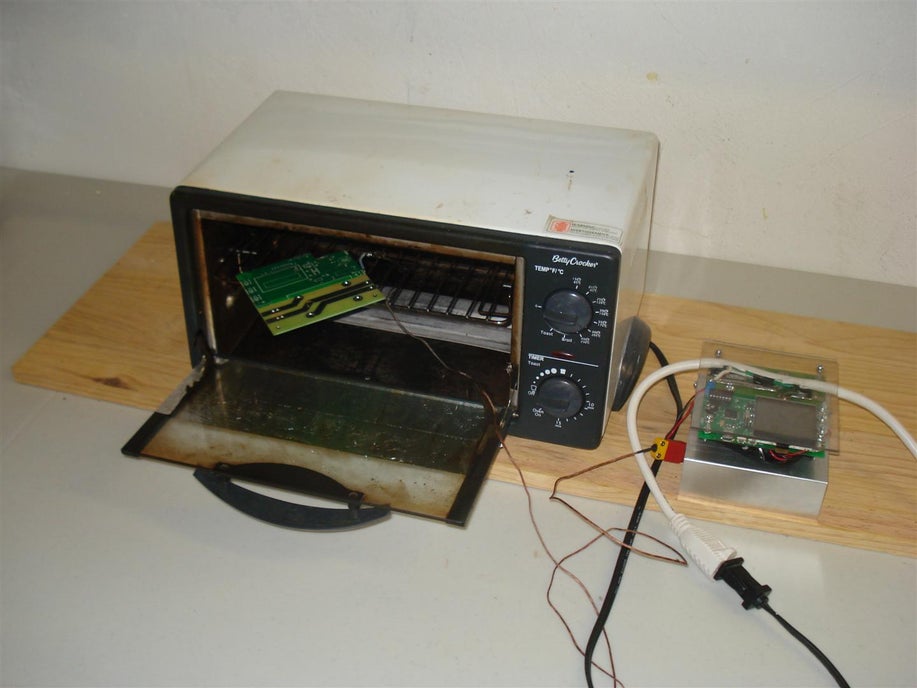Summary of Hack a Toaster Oven for Reflow Soldering using ATmega32 microcontroller
This project transforms a toaster oven into a reflow soldering oven for SMD electronics work. It uses an ATmega32U4 microcontroller to control temperature via a thermocouple sensor and AD595AQ amplifier and switches the oven’s heating element with a solid state relay. The controller supports USB logging, bootloading, a graphic LCD, and buttons for manual or automatic temperature profile control. Designed for safety and ease of use, it powers from a USB charger, includes a heatsink and fan for the relay, and features a protective plastic cover.
Parts used in the Reflow Toaster Oven Controller:
- Toaster oven
- ATmega32U4 microcontroller
- Thermocouple sensor
- AD595AQ thermocouple amplifier
- Solid state relay (rated 240V, 25A)
- Aluminum heat sink
- Cooling fan
- USB charger (AC-to-DC converter)
- Graphic LCD display
- 3 control buttons
- Plastic protective cover
As I get more serious into my electronics hobby, I need to work with more SMD components. Some component packages are very difficult or impossible to solder with a traditional soldering iron. To solve this problem, I decided to hack a toaster oven to become a reflow soldering oven.
Basically, to perform reflow soldering, solder paste is placed on a printed circuit board, and the components to be soldered is placed on top of the solder paste. When the oven heats the solder paste past the melting temperature. The solder paste melts and solders the component to the circuit board.

Here is a demonstration video:
Some more key features:
- The thermocouple is rated to over 500 degrees Celcius. Soldering using my solder paste requires only up to maybe 250 degrees Celcius.
- The solid state relay is used because they can provide better control than mechanical relays, and they are more reliable. Mechanical relays can wear out because of their mechanical nature, and from internal sparks that occur during switching. I plan on switching the relay at 1 Hz, so this is important.
- The relay is rated for 240V and 25A so it should work with any typical toaster oven in any part of the world. The relay is cooled with a custom made aluminum heat sink and a small cooling fan.
- Everything on this circuit is powered from the wall outlet because I’m using a tiny USB charger as a built-in AC-to-DC converter. This is good since one cable powers everything. A computer is not required to operate it.
- A plastic cover is created to protect the circuit from things touching it accidentally. I can safely handle the circuit without getting shocked.
For more Detail: Hack a Toaster Oven for Reflow Soldering using ATmega32 microcontroller
